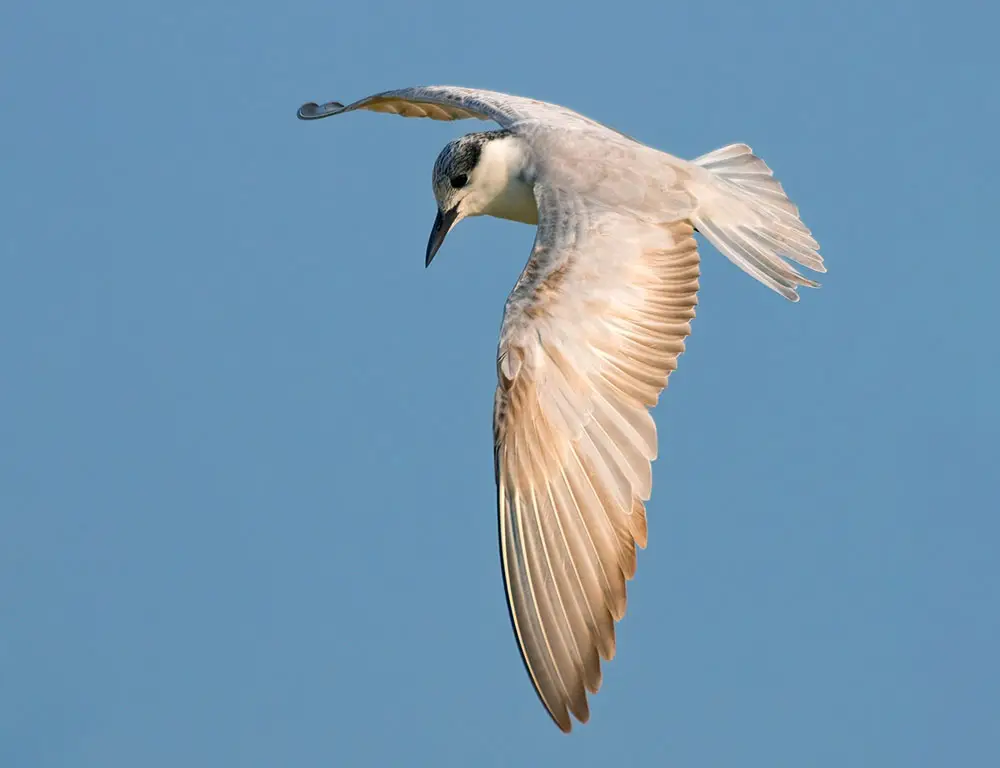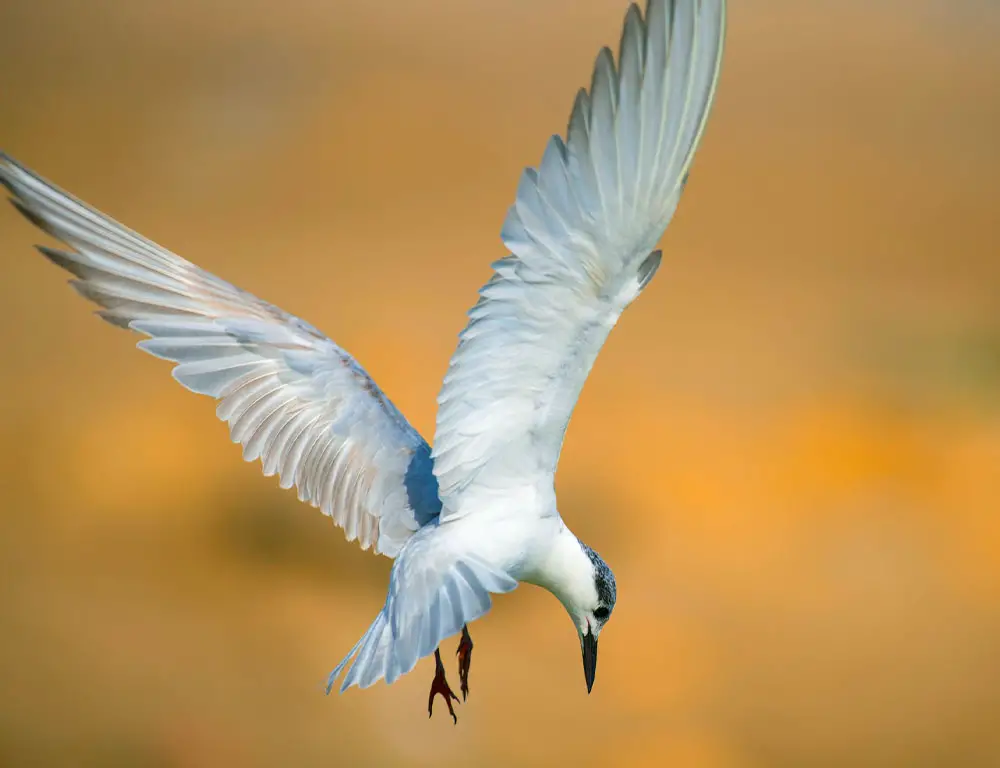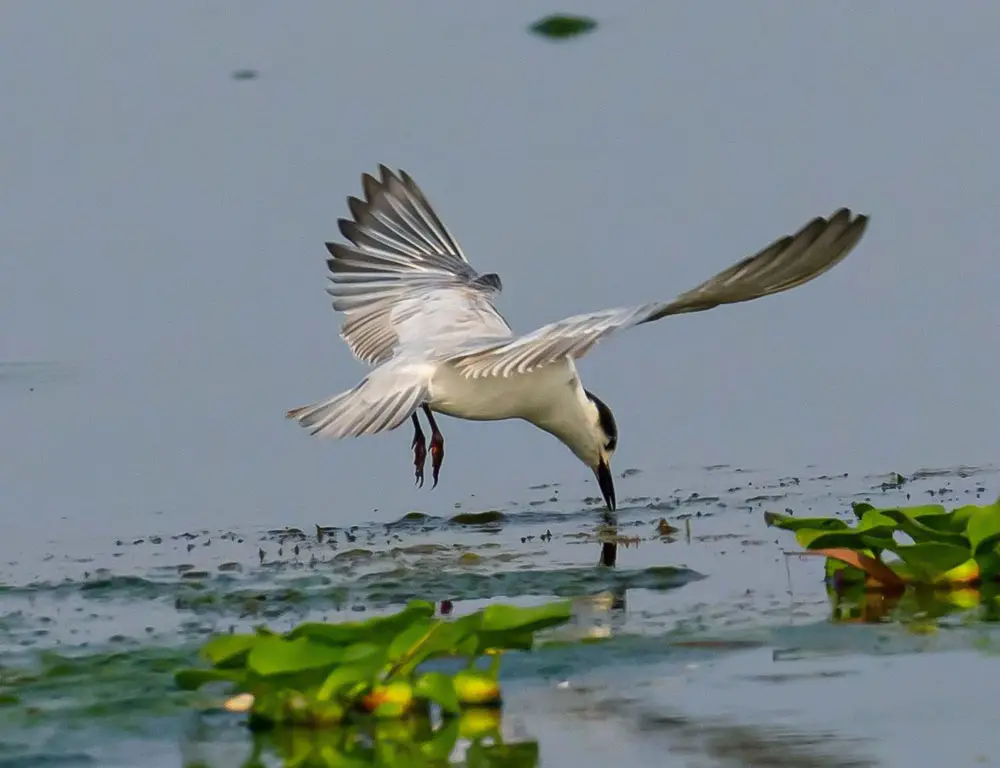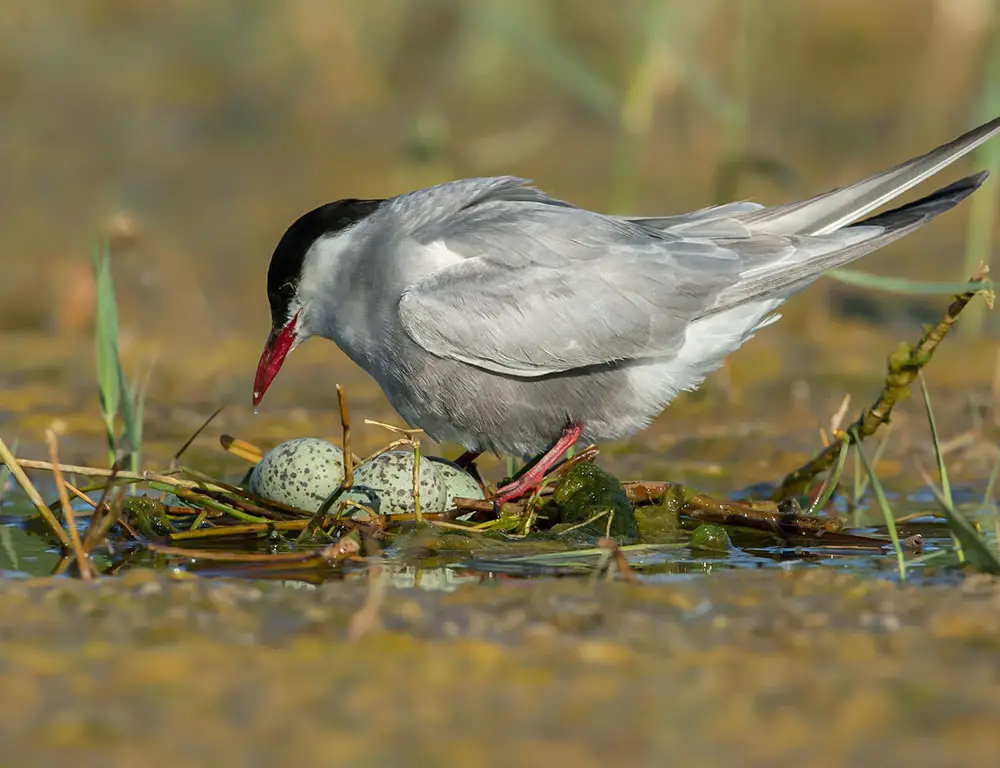Welcome to the captivating world of the Whiskered Tern, a remarkable bird species that has enthralled birdwatchers and ornithologists alike with its distinct features and fascinating behaviors.
The Whiskered Tern stands out as a true marvel of nature with its striking appearance, impressive wingspan, and whisker-like feathers.
Originating from Europe and Asia, these global travelers undertake incredible migratory journeys across continents, relying on wetland ecosystems for survival and sustenance.
From their unique breeding habits, where they nest in various unconventional locations, to their dedicated parental care, the Whiskered Tern’s life cycle is nothing short of captivating.
Join us on an enlightening journey as we explore the diverse facets of this extraordinary bird species, from its distinctive appearance to its intriguing mating rituals and migration routes.
Habitat and Distribution of the Whiskered Tern

The Whiskered Tern (Chlidonias hybrida) is an intriguing species with a wide geographic range and specific habitat preferences.
Habitat
Whiskered Terns primarily inhabit wetlands, preferring lakes, marshes, and ponds. These habitats provide ample opportunities for the terns to find small fish and insects, which constitute their primary diet.
During migration, they often remain close to coastal areas or large inland bodies of water. The availability of food sources and suitable nesting sites largely dictates their habitat choice.
Distribution
The distribution of Whiskered Terns spans across several continents:
- Europe: Whiskered Terns are prevalent in Central and Eastern Europe. They inhabit wetlands across this region, utilizing various freshwater habitats for nesting and foraging.
- Africa: In Africa, Whiskered Terns predominantly occupy sub-Saharan regions, excluding arid zones. They are commonly seen in wetland areas throughout these regions, taking advantage of the diverse ecosystems.
- Asia: Similar to their distribution in Europe and Africa, Whiskered Terns in Asia avoid desert areas but are otherwise widely distributed across the continent. They utilize wetlands and the coastal regions for nesting and feeding, showcasing their adaptability to different environments.
- Australia: In Australia, Whiskered Terns primarily inhabit the southern coasts during the summer months. These coastal regions provide suitable breeding grounds and ample food resources for the terns during this period.
Physical Characteristics of the Whiskered Tern

The physical characteristics of the Whiskered Tern indeed make it a fascinating and easily recognizable bird species.
Let’s delve deeper into each feature:
Body Length
Whiskered Terns have a slender body measuring approximately 24-28 cm long. This streamlined physique likely aids in their agility and efficiency during flight, which is crucial for hunting prey and navigating their habitat.
Wingspan
With an impressive 70-80 cm wingspan, Whiskered Terns are well-equipped for aerial foraging and long-distance flight. Their broad wings allow sustained gliding over wetlands and water bodies where they predominantly forage.
Bill
The bill of the Whiskered Tern is a striking feature, bright red with a sleek black tip. This bill is likely specialized for capturing prey such as small fish and insects, providing a sharp contrast against their plumage and aiding in precise hunting.
Plumage (Breeding and Non-breeding)
Whiskered Terns display distinctive plumage during breeding seasons with grey feathers on top and black underneath. This coloration may serve various purposes, such as mate attraction or camouflage during nesting.
Outside breeding periods, their plumage adopts a more subdued appearance with light-grey feathers on the body and white undersides, possibly helping them blend into different environments.
Legs
Whiskered Terns have short yet sturdy legs, which are another noteworthy feature. During the breeding season, their legs are a vibrant red color, possibly playing a role in mate attraction or territorial displays. After breeding, their leg color fades to a pale yellow.
Here’s a quick summary:
| Feature | Description |
| Body Length | Approximately 24-28 cm |
| Wingspan | Short: Red during breeding season & pale yellow afterwards |
| Bill | Bright red with black tip |
| Plumage (Breeding) | Grey on top and black underneath |
| Plumage (Non-breeding) | Light-grey body with white undersides |
| Legs | Short: Red during breeding season & pale yellow afterward |
Behavior and Diet of the Whiskered Tern

The behavior and diet of the Whiskered Tern indeed showcase its remarkable adaptability and resourcefulness, particularly in wetland environments.
Here’s a closer look at their behaviors and dietary preferences:
Migration and Social Behavior
Whiskered Terns are migratory birds, undertaking long journeys between breeding and wintering grounds. During migration, they often travel in flocks, displaying a social nature and providing a spectacular sight as they move together across vast distances.
Feeding Habits
These terns feed on small fish and aquatic insects, utilizing their agility and precision to catch prey mid-flight over water bodies. Insects are vital during the breeding season.
However, they demonstrate versatility in their diet, incorporating other food sources such as amphibians and scavenged waste when necessary.
Dietary Composition
Their primary food sources include fish (50%), aquatic insects (30%), amphibians (10%), and scavenged waste (10%). This diverse diet likely contributes to their ability to adapt to varying environmental conditions and food availability.
Nesting Behavior

Whiskered Terns exhibit unique nesting habits, preferring marshy areas to build floating nests from aquatic vegetation.
This nesting strategy allows them to thrive in their wetland habitats, utilizing the surrounding environment to create secure breeding sites for their offspring.
Conservation Status of the Whiskered Tern
The conservation status of the Whiskered Tern, currently classified as “Least Concern” by the International Union for Conservation of Nature (IUCN), indeed warrants attention despite its seemingly stable population.
Habitat Loss
One of the primary threats to Whiskered Tern populations is habitat loss, mainly due to the draining of wetlands and conversion of these habitats into agricultural lands.
Wetlands are crucial for their breeding and foraging activities, and their loss can significantly impact their populations.
Human Disturbances
Human activities such as fishing, recreational disturbances, and habitat degradation can disrupt Whiskered Tern nesting and foraging behaviors.
While the impact of these disturbances is not as severe as habitat loss, they still pose a medium-level threat to the species.
Pollution
Pollution, including water pollution from agricultural runoff and industrial activities, can affect the quality of the Whiskered Tern’s habitat and the availability of prey species.
While currently considered a low-level threat, continued pollution could have cumulative effects on their populations over time.
Conclusion
Exploring the Whiskered Tern’s life has underscored nature’s resilience and the importance of biodiversity conservation. Its adaptability across various habitats and its unique feathering and vital ecological role highlight the intricacies of our natural world.
However, human-induced threats pose significant challenges to its survival. Thus, concerted conservation efforts are imperative to safeguard the Whiskered Tern and the delicate balance of our ecosystems.
Studying and protecting species like the Whiskered Tern is a scientific and moral endeavor. Let us commit to preserving and cherishing the diversity of life on our planet, recognizing the value of every creature, no matter how small, in sustaining the web of life.